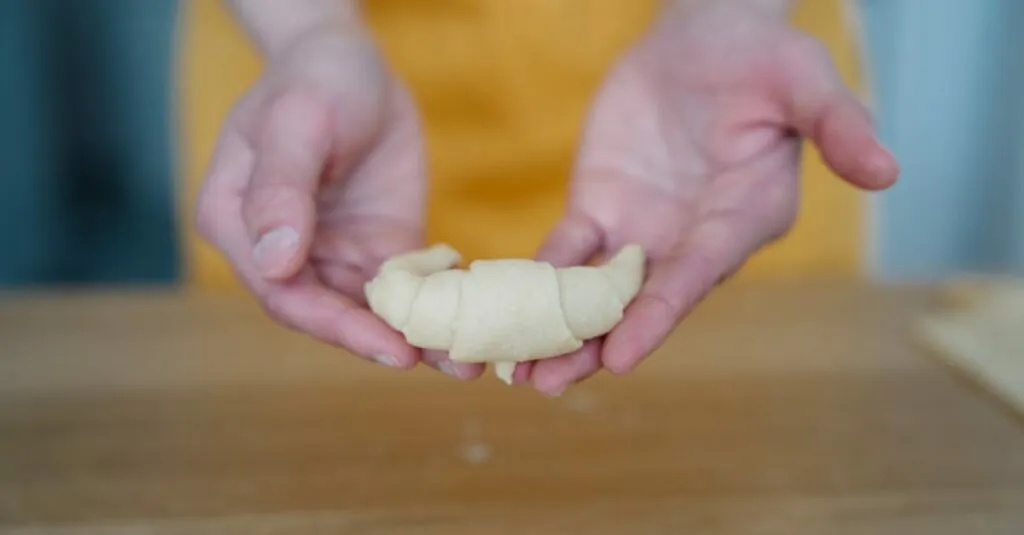Table of Contents
ToggleFrench cooking techniques are the secret sauce behind some of the world’s most delectable dishes. From the delicate art of soufflé-making to the bold flavors of coq au vin, mastering these skills can elevate anyone’s culinary game. It’s not just about following a recipe; it’s about embracing a rich tradition that transforms simple ingredients into extraordinary meals.
Overview of French Cooking Techniques
French cooking techniques form the foundation of gourmet cuisine worldwide. Classical techniques include sautéing, braising, and poaching, each offering unique flavors and textures. Mastering these methods enhances precision in cooking.
Sautéing utilizes high heat to cook ingredients quickly, often resulting in a perfect sear. Braising combines moist and dry heat, ideal for tougher cuts of meat. Poaching gently cooks delicate ingredients like eggs and fish in simmering liquids.
Other essential techniques consist of emulsification and reduction. Emulsification creates stable mixtures, such as vinaigrettes and sauces. Reduction intensifies flavors by evaporating liquid, concentrating the essence of the dish.
The art of French pastry employs techniques like folding and tempering. Folding integrates ingredients without deflating mixtures, essential for soufflés and meringues. Tempering chocolate ensures a glossy finish and smooth texture, critical in dessert presentation.
Sauce-making represents a cornerstone of French cuisine. Classic sauces like béchamel, hollandaise, and velouté serve as bases for various dishes. Understanding these sauces allows for versatility and creativity in the kitchen.
Knife skills shape the success of French cooking techniques. Mastering cuts like julienne, brunoise, and chiffonade enhances precision and uniformity in food preparation. Proper knife techniques contribute to efficiency and safety in the kitchen.
Each technique serves to elevate simple ingredients into culinary masterpieces. Embracing these French methods fosters a deeper appreciation of cooking as a craft, inspiring cooks to explore and experiment.
Classic Techniques
Mastering classic French cooking techniques transforms culinary skills, enhancing both flavor and presentation. Techniques such as sautéing, braising, and poaching are fundamental in elevating dishes.
Sautéing
Sautéing involves cooking food quickly in a small amount of fat over high heat. This method creates a flavorful crust while retaining moisture inside. Chefs often use sautéing for vegetables and proteins, allowing them to caramelize and develop rich flavors. A notable example includes sautéed mushrooms, which gain a deep, savory taste. The key to sautéing is maintaining a high temperature, ensuring the food cooks without steaming.
Braising
Braising combines both moist and dry heat methods, making it ideal for tough cuts of meat. Typically, searing the meat in fat occurs first, followed by slow cooking in liquid. This technique breaks down connective tissues, resulting in tender, flavorful dishes. Coq au vin exemplifies braising, showcasing chicken cooked in wine, enhancing its richness. Choosing the right liquid, such as stock or wine, further improves the depth of flavor in braised meals.
Poaching
Poaching gently cooks food in simmering liquid, preserving moisture and delicate flavors. This technique works exceptionally well for eggs and fish. Poached eggs, for instance, achieve a tender texture and smooth surface. Utilizing flavored liquids such as broth or wine can elevate the dish’s taste profile. Maintaining a low temperature is crucial in poaching, as rapid boiling can break apart delicate ingredients.
Modern Techniques
Modern French cooking techniques offer innovative ways to elevate culinary experiences. Two notable methods include sous vide and molecular gastronomy, each transforming traditional practices.
Sous Vide
Sous vide involves cooking food in a vacuum-sealed bag submerged in precise temperature-controlled water. This technique ensures uniform cooking, enhances flavors, and preserves moisture. For instance, steak cooked sous vide achieves a perfect doneness throughout, while retaining its juiciness. Chefs appreciate sous vide for its ability to simplify the cooking process, allowing for greater consistency in results. Time can vary, from one to 48 hours, depending on the ingredient and desired texture. A popular choice for vegetables, sous vide enhances vibrant colors and nutrients, creating visually appealing dishes.
Molecular Gastronomy
Molecular gastronomy merges science with culinary art, resulting in surprising textures and flavors. Techniques like spherification create liquid-filled spheres that burst with flavor upon consumption. Chefs utilize techniques such as foaming and gelification to transform sauces and ingredients. A perfect example includes using agar-agar to produce textured gels that elevate presentation. Creativity flourishes as chefs experiment with unexpected combinations, pushing boundaries of traditional French cuisine. This avant-garde approach encourages cooks to rethink ingredients and techniques, fostering innovation in the kitchen.
Essential Tools and Equipment
Mastering French cooking requires specific tools and equipment tailored for various techniques. A chef’s knife ranks as one of the most important utensils, providing precision for chopping and slicing ingredients. High-quality cutting boards, preferably wooden or plastic, protect the knife’s edge while ensuring hygiene.
Saucepans and skillets come next, ideal for techniques like sautéing and braising. Non-stick surfaces ease the cooking process, especially when creating delicate dishes such as fish. Cast iron pots also play a crucial role, particularly in slow cooking, enhancing flavor through even heat distribution.
Whisks are essential for emulsifying sauces, combining oil and vinegar into a cohesive dressing. Various sizes cater to different tasks, from small for whisking egg yolks to large for mixing larger batches. Alongside whisk, a rubber spatula helps in folding ingredients gently, ensuring mixtures retain their texture.
Baking also occupies an important position in French cuisine. A stand mixer proves invaluable for kneading doughs and whipping creams, making tasks easier and quicker. Baking sheets and silicone mats facilitate even baking, ensuring pastries spread correctly without sticking.
Balancing metaphor with technique, thermometers provide precise temperature readings. Accuracy is vital, especially in sous vide cooking. Enhancing the experience, fine mesh strainers are perfect for separating sauces and clarifying stocks, crafting smooth results.
Each of these tools contributes significantly to achieving results that reflect the finesse of French cooking. Investing in quality items leads to better outcomes in both traditional and modern methods. Embracing practicality ensures a more enjoyable cooking experience and elevates the artistry involved.
Tips for Mastering French Cooking Techniques
Practicing fundamental techniques enhances skills in French cooking. Focus on consistency when sautéing; maintaining high heat while moving ingredients quickly helps achieve perfect searing. Learning to properly braise requires understanding the balance between dry and moist heat, leading to tender, flavorful dishes.
Mastering knife skills elevates preparations dramatically. Using a chef’s knife for various cuts improves efficiency and precision. Additionally, familiarizing oneself with the method of poaching can transform delicate foods, conserving flavors while maintaining optimal texture.
Experimenting with emulsifications can take sauces to a new level. Whisking ingredients gradually ensures smooth, luscious results. Familiarizing with reductions enhances the depth of sauces, intensifying flavors while creating a glossy finish.
Pay attention to tools as they play a vital role in mastering techniques. Quality cutting boards reduce wear on knives, while non-stick skillets make delicate cooking easier. Incorporating a thermometer ensures accuracy, particularly when working with meats and baked goods.
Exploring modern techniques doesn’t overshadow traditional methods. Sous vide cooking offers precision, allowing chefs to create perfectly cooked proteins consistently. Engaging with molecular gastronomy techniques introduces exciting textures and presentations, ultimately expanding culinary creativity.
Daily practice builds confidence and familiarity. Setting aside time for experimentation encourages individuals to discover unique flavor combinations. Seeking out classes or workshops can fast-track learning while providing hands-on experience.
Sharing these techniques with others fosters a supportive environment for culinary exploration. Involving friends or family in the cooking process opens avenues for creativity and shared learning. Embracing both classic and innovative French techniques ensures a richer cooking experience.
Mastering French cooking techniques opens the door to a world of culinary possibilities. These skills not only enhance the flavor and presentation of dishes but also foster a deeper appreciation for the art of cooking. By embracing both classical methods and modern innovations, cooks can transform everyday meals into extraordinary experiences.
Investing time in practice and utilizing quality tools is key to achieving success in the kitchen. Whether it’s perfecting a soufflé or experimenting with sous vide, the journey through French cuisine is both rewarding and inspiring. As cooks refine their techniques, they’ll discover the joy of creating exceptional dishes that celebrate the rich culinary tradition of France.







